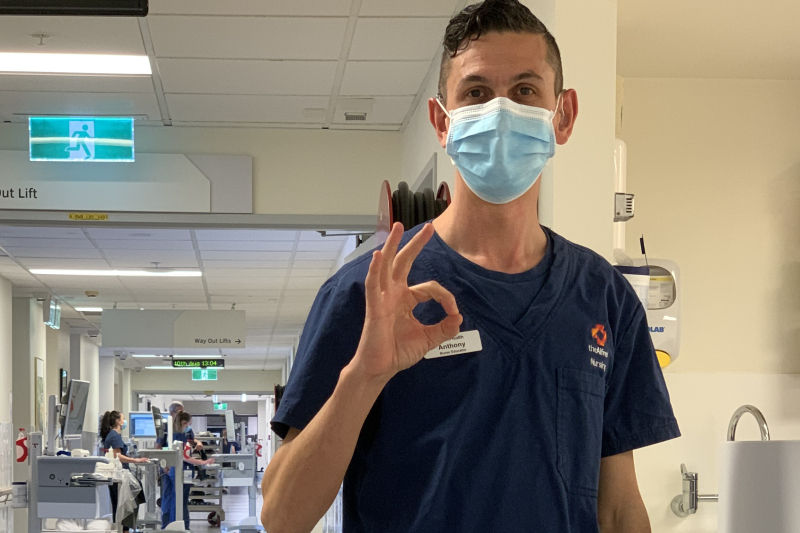Communicating in a mask

For many of us, wearing a mask is a necessary inconvenience. But for the one in six people in our community who are deaf or hearing impaired, wearing masks can be incredibly isolating. Anthony Cignarella is a nurse educator in our heart and lung team – he’s also hearing impaired. He’s put together some tips on communicating while wearing a mask.
The absence of visual cues such as lip and mouth movements make it incredibly difficult to read facial expressions or lip-read, rendering comprehension difficult, Anthony said.
"Masks also distort speech clarity and reduce speech volume. Maintaining a safe physical distance of at least 1.5 meters further diminishes volume because we cannot lean in or get closer to help fix or clarify a communication breakdown," he said.
To communicate effectively while wearing a mask, follow these tips:
· Obtain the person's attention before speaking – try saying their name
· Speak clearly, and a little more loudly and slowly than usual. Exaggerated shouting or slowness diminishes sound clarity and is counterproductive
· Repeat or rephrase if necessary
· Maintain appropriate eye contact if possible
· Reduce or remove background noise where possible
· Use simple hand gestures and body language where appropriate, like a thumbs up or down
· Ensure there is good lighting on your face and try to maintain a similar horizontal level
· Consider using alterative communication methods such as writing the message or simply use text on your smart phone
· Don’t be afraid to check for understanding of key details.
Most of all, Anthony says be patient.
"If you’re asked to repeat please be conscientious, patient and mindful that not all individuals with hearing loss have the confidence to admit their limitations," he said.
"Hearing loss is not often an overtly obvious disability; it is a silent one (pardon the pun!)."


